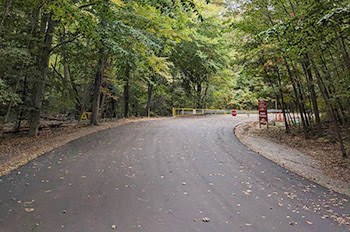Investment in Conservation Falls Short
WASHINGTON, D.C. – The Senate Appropriations Committee yesterday released their top-line funding levels for each of twelve federal appropriations bills, cutting conservation funding to $160 million below the already spartan House allocation unveiled earlier this month.
Known as the 302 (b) allocations, the document released today divides the $1.016 trillion in federal discretionary spending for fiscal year 2016 amongst various departments and agencies. With less money allocated to conservation, the Senate Interior Appropriations Subcommittee will be forced to cut back on services and capital investments at our national parks, refuges, battlefields, and forests.
The Senate’s allocation will result in a $2-billion cut relative to 2010 funding levels. With the return of sequestration in fiscal year 2016, conservation groups are calling for a budget deal that can serve as a successor to the Murray-Ryan Bipartisan Budget Act of 2013 to give the Appropriations Committee suitable resources for preserving America’s iconic landscapes and natural treasures for the next generation.
Each year, outdoor recreation—and the conservation and preservation that provide an infrastructure for outdoor experiences—drives over $646 billion in consumer spending and creates over 6.1 million jobs that can’t be sent offshore. This segment of our economy depends on America’s legacy of public access, open land, and clean water.
The 1,100 organizations united under America’s Voice for Conservation, Recreation, and Preservation agree that Congress needs to invest more in conservation funding. Here’s what the leaders of these groups are saying:
“The North American Model of wildlife conservation is the envy of the world, but our sporting heritage is at risk,” says Whit Fosburgh, president and CEO of the Theodore Roosevelt Conservation Partnership. “If we don’t invest in America’s public lands and waters, and the science necessary to manage them, we won’t be able to pass along our hunting and fishing traditions to our kids and grandkids. Congress needs to put their differences aside and come up with a budget deal that invests in America’s iconic landscapes and wildlife.”
“Investing in nature is a smart strategy for a strong America,” says Mark R. Tercek, president and CEO of The Nature Conservancy. “Our nation’s lands and waters benefit our economy, enhance our communities, keep us safer from storm risks, and provide access to outdoor recreation. And, from a dollars-and-cents perspective, investments in nature produce a clear return. We need stronger federal investments in conserving our natural resources so we can pass these benefits on to our future generations.”
“The levels of funding for conservation and recreation infrastructure and programs coming out of Congress do not support the growth and success of the outdoor industry or the 6 million jobs that are attributed to outdoor activity,” says Jennifer Mull, CEO of Backwoods Equipment and Outdoor Industry Association board chair. “We hope to see a better solution that doesn’t target these programs, which make up less than one percent of the federal budget and pay dividends towards healthy communities and a healthy economy overall.”
“We appreciate how tough it is for Congress to make the difficult choices on funding, but Congress must step up and do a better job on natural resources funding in 2016,” says Chris Wood, president and CEO of Trout Unlimited. “Our staff and volunteers help federal resource agencies use their modest funds to leverage many times over the funding that is critical to partnership projects. Our farmer, rancher, and industry partners need to know that all of their sacrifice and hard work for fish habitat will not be in vain because Congress did not chip in a fair share of the funds needed to drive project success on the ground.”
“Conservation programs have been starved of the dollars they need for many years,” says Alan Rowsome, senior director of government relations for lands at The Wilderness Society. “They represent barely one percent of the federal budget yet our public lands and waters are a significant economic driver nationally, especially in gateway communities all across the country. The Senate is proposing even deeper cuts to agencies that are already having trouble maintaining basic infrastructure, like visitor centers, and filling essential positions, such as law enforcement, managers, and rangers. This diminishes the outdoor experience for all Americans who recreate on our public lands.”
“Preserving our nation’s historic sites is essential to tell the diverse stories of all Americans, from places like the Martin Luther King Jr. National Historic Site to the Statue of Liberty National Monument and Chaco Canyon National Historical Park,” says Tom Cassidy, vice president of government relations at the National Trust for Historic Preservation. “Sustained investments in the nation’s preservation programs enable us to protect the places where future generations can experience the full breadth of our history. The remarkable impact of the federal historic rehabilitation tax credit, which has preserved more than 40,000 buildings, created over 2.5 million jobs, and catalyzed $117 billion in community revitalization, is just one example of the economic benefits of historic preservation.”






